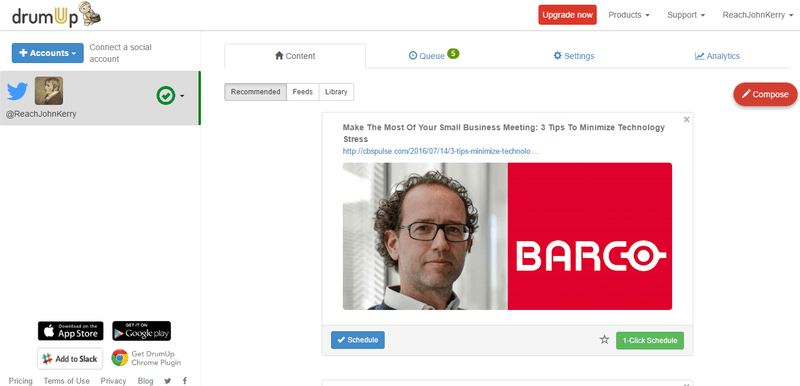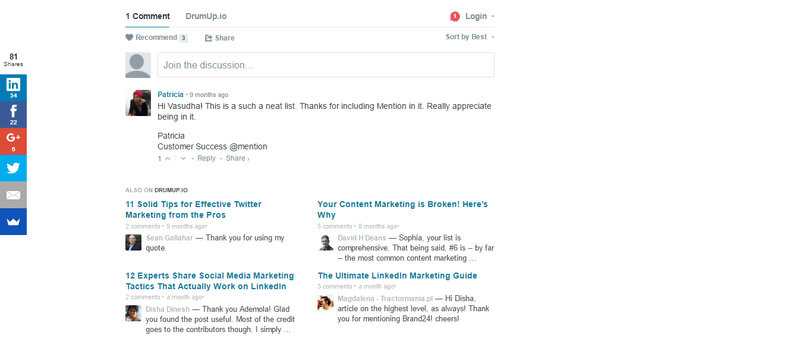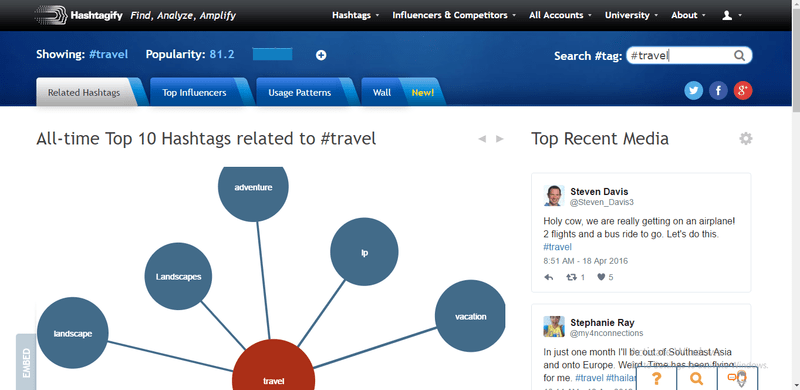Do you add engaging elements to all of the content that you create? Have you noticed that your engagement numbers still refuse to increase?
Don’t fret about it too much because that’s not uncommon. In fact, according to this study by Columbia University and the French National Institute, 59% of the links posted on Twitter are never clicked!
However, there are reliable tactics that you can use to increase your engagement numbers. The following is a list of 5 fundamental practices that you should incorporate into any content form that you create.
#1: Give your content visual appeal
The human mind is primarily visual. “Processing print isn’t something the human brain was built for,” says Marcel Just, the director of the Center for Cognitive Brain Imaging at Carnegie Mellon University. “Mother Nature has built into our brain our ability to see the visual world and interpret it.”
Remember the goldfish? Yes, the living organism that has a greater attention span (9 sec) than people on the internet (8 sec).
To earn your audience’s attention in the noisy social sphere, you have to go visual.
[clickToTweet tweet=”‘Mother Nature has built into our brain our ability to see the visual world and interpret it.'” quote=”‘Mother Nature has built into our brain our ability to see the visual world and interpret it.’ – Marcel Just, Carnegie Mellon University”]
It doesn’t matter if you aren’t visually gifted anymore, not with apps like Piktochart that have brilliant, pre-designed templates on an easy-to-use editor.
Follow this simple routine to design your own visuals for social media posters, ad canvases or infographics.
- Define your concept. The clearer, the better. What is your visual for: A blog, or an ad canvas? What do you want to convey to your audience? What information and what emotion?
- Google your descriptions for inspiration.
- Navigate to an editor like Piktochart and experiment with a few variations of what you have in mind.
- Show the variations to colleagues or share them on social media to measure engagement and see which ones work the best.
- Share the most successful version on all channels at your disposal for the greatest impact.
Check out these guides for the optimal size and tips on design.
#2: Share the undiscovered and share smart
Virality is a short burst of intense activity. It doesn’t happen over an extended period of time, and it has a definite life span.
The issue with sharing viral content is that people may have seen it previously, in some form or the other, on one social channel or the other.
It isn’t new. Or fresh.
As Jonathan Harrop said on an interview with us, “Leave the sharing of viral posts to individuals.” As a brand, your aim should ideally be to give your audience top-notch content that is novel as much as it is useful.
You can’t monitor every one of your industry’s blogs on a daily basis, or that’s all you’d be doing. You could use a content curation app like DrumUp that discovers and recommends fresh content for social media fitting the themes that you choose.
It is even better when the curation app lets you schedule from the same platform.
A second insight on virality – it doesn’t come cheap with respect to time and monetary investment. A substantial amount of effort is spent on creating content with ‘viral’ value.
What if you got your employees to help? If your business employs as few as 50 people, their sharing of your company’s promotional content would mean at least a 100X increase in reach in comparison with sharing out of your company accounts (and impact, because people trust people like themselves over brands). Neat, huh? Meet employee advocacy. The smart way to share.
#3: Initiate a conversation
Have you ever studied a conversation? A simple, offline, sans technology, face-to-face conversation between friends? How does it begin? How does it keep going?
There’s an initiation where a subject is introduced, and one side narrates while the other side listens. The speaker gives the listener room to pitch in with his or her opinions, the listener takes over, and this volley continues until the conversation is exhausted and ends.
Some of the important elements to note: The speaker and listener are interested in some common issue. Both of them listen at some point. The best conversations also have some emotional value attached to them.
This is precisely what you should emulate to initiate quality conversations on social media.
With every piece of content that you create and share, make sure you:
- Exhibit a conversational tone and approachability
- Add an open comment or question
- Ensure that your audience has means and motive to respond to you
These elements could be as simple as asking, “Have you tried this yet?”, “What do you think?”, or even “Want to tweet this quote?” on your blogs and in your text while sharing on social media.
Most blogs employ Disqus to create their own comments section.
Sharing content on communities like Quora and LinkedIn groups under the right conversations is also a great way to initiate a back-and-forth exchange of ideas.
#4: Draw in the right people
To be heard, you first have to be discovered. Being discovered is also secondary to being discovered by your target market.
Search engines make drawing your audience in both easy and complicated. When most people hear “search engine”, they think of Google, but in reality, search tools are present on each social media platform you use – Facebook, LinkedIn, Twitter, and the rest.
The objective is simple. When your potential client stares at his or her computer screen and searches for a solution that you can provide, you must show up, and somewhere close to the top because today’s internet users have really short attention spans.
How do you draw people in?
- Talk about what they are seeking (frequently asked questions)
- Refer to all the right keywords in your content
- Provide value by sharing something that they won’t find elsewhere
- Leverage social media specific search aids, like the hashtag
Hashtags can be the difference between being discovered and not. Some tools like Hashtagify.me are indicators of which hashtags are popular and which ones would be best to use.
#5: Be present where it matters
The internet is a destination for information discovery and exchange in all forms. Everyone has divided interests, and they move in different directions.
But there exists a definite set of people who would buy from you. There are people who require and would use your product or service.
How do you make sure to reach each of them?
You can’t talk to them blindfolded, and your voice may not reach where each of them is on the internet.
Incidentally, that’s why social media is that important. 1/3rd of the world’s population spends time using social networks.
Even so, you can’t send content out to the every one of the 2.3 billion people on social media. Content is most effective when targeted at the segment of that population that would buy from you.
So you have to listen to and locate your audience on social media. A number of social listening tools like Brand24 or Mention.com monitor the social scene and report mentions of your brand or keywords that you set. This allows you to keep watch on the conversations that matters.
The tool also gives you influencer scores, informing you of the best people to approach for amplifying your content and visibility on social media.
The social media marketing industry is teeming with strategies and software to help you further your goals. It is only a matter of how much you explore, experiment with and capitalize on.
What’s your most effective social media strategy? Commenter outreach? Under-utilized communities? We’d love to chat about it with you in the comments!








